- Michael Patrick Brady
- Albums and Singles
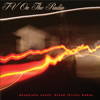 Young Liars, released this past summer, was an intoxicating shotof dark, precise sound; at once both deeply passionate and eerilychilly, the product of a gospel choral that had lost its way andpreferred to creep out unsuspecting subway riders rather than bask inany holy warmth. While that EP showcased a few densely packed tracks,their new LP finds that intensity strung across a larger canvas,changing the shape and color into something that asks for more patienceand observation. "The Wrong Way" is a charmer, thudding along withsoupy bass and percussion as baritone and alto saxophones bleat andsupport the vocal harmonies of the three members, which sound like asnapping ragtime chorus, full bodied and drawling. Though the musicalfoundation is simple and loopy, it serves as a perfect background forthe expressive vocals that rise and fall with bursts of energy, beggingfor the pews to raise their hands and chime in. "Ambulance" eschews anykind of pretense that Tunde Adebimpe's vocals are not the core of thisband's power, dropping the fuzzy noise collages for an acapellaexcursion. Adebimpe's breathy triplets on the song's chorus of "I /will be / your / ac / ci / dent / if you / will be / my am / bu /lance," caress every syllable, giving them each proper considerationbefore spilling them out in his smooth baritone. Unfortunately, theslower tracks, like "Don't Love You," lack the amorphous, ephemeralquality that made "Blind" from their past EP such a spooky, alluringlisten. Where before a lurch was arresting, visceral, here they areclumsy and cautious. "Poppy" suffers from a relatively banal guitarriff that comprises the bulk of the track. While this is hardly enoughto invalidate any interest in Desperate Youth, Bloodthirsty Babes,it is indicative that the group finds themselves searching for the nextstep, the next mode for their sound. "Bomb Yourself" finds thosebrilliant harmonies sprawling across a bass heavy, dub-inflected bed,capturing a deep groove. The raw quality of TV on the Radio's energy,and their recklessly experimental tendencies make listening to everynook and cranny of their tinkered sound interesting, and hints at evenmore dramatic pieces in the future.
Young Liars, released this past summer, was an intoxicating shotof dark, precise sound; at once both deeply passionate and eerilychilly, the product of a gospel choral that had lost its way andpreferred to creep out unsuspecting subway riders rather than bask inany holy warmth. While that EP showcased a few densely packed tracks,their new LP finds that intensity strung across a larger canvas,changing the shape and color into something that asks for more patienceand observation. "The Wrong Way" is a charmer, thudding along withsoupy bass and percussion as baritone and alto saxophones bleat andsupport the vocal harmonies of the three members, which sound like asnapping ragtime chorus, full bodied and drawling. Though the musicalfoundation is simple and loopy, it serves as a perfect background forthe expressive vocals that rise and fall with bursts of energy, beggingfor the pews to raise their hands and chime in. "Ambulance" eschews anykind of pretense that Tunde Adebimpe's vocals are not the core of thisband's power, dropping the fuzzy noise collages for an acapellaexcursion. Adebimpe's breathy triplets on the song's chorus of "I /will be / your / ac / ci / dent / if you / will be / my am / bu /lance," caress every syllable, giving them each proper considerationbefore spilling them out in his smooth baritone. Unfortunately, theslower tracks, like "Don't Love You," lack the amorphous, ephemeralquality that made "Blind" from their past EP such a spooky, alluringlisten. Where before a lurch was arresting, visceral, here they areclumsy and cautious. "Poppy" suffers from a relatively banal guitarriff that comprises the bulk of the track. While this is hardly enoughto invalidate any interest in Desperate Youth, Bloodthirsty Babes,it is indicative that the group finds themselves searching for the nextstep, the next mode for their sound. "Bomb Yourself" finds thosebrilliant harmonies sprawling across a bass heavy, dub-inflected bed,capturing a deep groove. The raw quality of TV on the Radio's energy,and their recklessly experimental tendencies make listening to everynook and cranny of their tinkered sound interesting, and hints at evenmore dramatic pieces in the future. Read More
- Administrator
- Albums and Singles
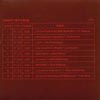 FT is for Folktales, a series of three sets of three 3"CDs that Crouton has released over recent years, each disc devoted to asingle artist of electroacoustic, experimental electronic, or impovorientation. For a finale, this full-length disc finds Tietchens'remixing all three triptychs, producing nine individual tracks, each apredictably drastic reinterpretation of its source disc. While the "+"might suggest a thickening of each track into the kind of throbbing,gray industro-ambiance that made Tietchens' name the mark of quality ontoo many lost cassette comps from decades past, his approach here ismuch more subtractive, closer to the brutally minimal, ascetictechnique begun somewhere around the more recent Menge series.The new mixes reduce nearly every track to a widely-scattered array ofsound fragments, never slipping into glitch-like impressionism, ratherworking through a pensive, reserved process of manipulation, eachcompressed or bloated bit of sound dust given ample, isolated space.Tietchens seems intent on discovering (or creating), in each piece,those moments which stare blankly back from the disc's digital sheen,which appear absent of any relation to the whole yet arrive with acryptic, almost mocking air. The artist has always kept his dark, wilysense of humor in the background of his releases (often highlighted bya E.M. Cioran aphorism or two), and this disc is no exception. The jokehere, for me at least, is that Tietchens is, more than ever, toyingwith the idea of creating music where human touch has absolutely nosignificance. The punch line comes with the realization that Tietchensis remixing others' compositions, making his job necessarily harder. Each disc in the original Folktalesseries was conceptualized around the idea of narrative, with thevarious artists essentially telling stories through sound, makingTietchens accomplishment, though idiosyncratic itself, an effectiveerasure of the others' storytelling. His reconstructions could not bemore remote; I'm even wary of using an adjective like "cold" for fearof suggesting that anything atmospheric emerges. The minisculecrunches, warped thuds, and deadened hums that become windows into theoriginal recordings do allow for glimpses into the unique flowand sonorous quality of each, however Tietchens displays a tested skillfor introducing shards of melody or motion while almost simultaneouslyenacting their disappearance. It's as if wrapped up in each stuntedswell, each vestige of previous creator and previous completion, isevidence of a fundamental insubstantiality. The artist's talents aremost remarkable when applied to the coarse saxophone and violincompositions from Bhob Rainey and Dan Warburton. Tietchens is able toretain the distinctiveness of each instrument, even allowing for a fewmelodic intervals to take shape, but he completely rejects any of thepersonality that comes with such age-old devices, turning them on anangle that emphasizes only their existence as machines, simpleconveyances of empty sound. While on paper the artist's modus operandihas all the charm of a night spent sleeping on a board, rest assuredthat Tietchens does not let the potential for enjoyment slip throughthe cracks. He understands the audacity of his place within the littlecharade he's created and takes care to make the results more appealingthan FT+'s faux-laboratory chart cover would indicate. This ismerely Tietchens as E.M. Cioran's fatalistic hero, playing theinvisible hand of time, sweeping the folklore to the hens with a smileon his face.
FT is for Folktales, a series of three sets of three 3"CDs that Crouton has released over recent years, each disc devoted to asingle artist of electroacoustic, experimental electronic, or impovorientation. For a finale, this full-length disc finds Tietchens'remixing all three triptychs, producing nine individual tracks, each apredictably drastic reinterpretation of its source disc. While the "+"might suggest a thickening of each track into the kind of throbbing,gray industro-ambiance that made Tietchens' name the mark of quality ontoo many lost cassette comps from decades past, his approach here ismuch more subtractive, closer to the brutally minimal, ascetictechnique begun somewhere around the more recent Menge series.The new mixes reduce nearly every track to a widely-scattered array ofsound fragments, never slipping into glitch-like impressionism, ratherworking through a pensive, reserved process of manipulation, eachcompressed or bloated bit of sound dust given ample, isolated space.Tietchens seems intent on discovering (or creating), in each piece,those moments which stare blankly back from the disc's digital sheen,which appear absent of any relation to the whole yet arrive with acryptic, almost mocking air. The artist has always kept his dark, wilysense of humor in the background of his releases (often highlighted bya E.M. Cioran aphorism or two), and this disc is no exception. The jokehere, for me at least, is that Tietchens is, more than ever, toyingwith the idea of creating music where human touch has absolutely nosignificance. The punch line comes with the realization that Tietchensis remixing others' compositions, making his job necessarily harder. Each disc in the original Folktalesseries was conceptualized around the idea of narrative, with thevarious artists essentially telling stories through sound, makingTietchens accomplishment, though idiosyncratic itself, an effectiveerasure of the others' storytelling. His reconstructions could not bemore remote; I'm even wary of using an adjective like "cold" for fearof suggesting that anything atmospheric emerges. The minisculecrunches, warped thuds, and deadened hums that become windows into theoriginal recordings do allow for glimpses into the unique flowand sonorous quality of each, however Tietchens displays a tested skillfor introducing shards of melody or motion while almost simultaneouslyenacting their disappearance. It's as if wrapped up in each stuntedswell, each vestige of previous creator and previous completion, isevidence of a fundamental insubstantiality. The artist's talents aremost remarkable when applied to the coarse saxophone and violincompositions from Bhob Rainey and Dan Warburton. Tietchens is able toretain the distinctiveness of each instrument, even allowing for a fewmelodic intervals to take shape, but he completely rejects any of thepersonality that comes with such age-old devices, turning them on anangle that emphasizes only their existence as machines, simpleconveyances of empty sound. While on paper the artist's modus operandihas all the charm of a night spent sleeping on a board, rest assuredthat Tietchens does not let the potential for enjoyment slip throughthe cracks. He understands the audacity of his place within the littlecharade he's created and takes care to make the results more appealingthan FT+'s faux-laboratory chart cover would indicate. This ismerely Tietchens as E.M. Cioran's fatalistic hero, playing theinvisible hand of time, sweeping the folklore to the hens with a smileon his face. - "Sweet Sonk" v. Bhob Rainey
- "20012002" v. Dan Warburton
- "Among the Ash-Heaps and Millionaires" v. Kevin Shea
Read More
- Administrator
- Albums and Singles
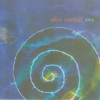 Ora was Andrew Chalk and Darren Tate with Jonathan Coleclough, Lol Coxhill, Colin Potter, and Daisuke Suzuki. Final, released in 2002, was to be this group's final album, but there were five pieces that never made it to that record because they had been lost; After Rainfall collects those five pieces and, with varying degrees of success, shuts the door on Ora.
Ora was Andrew Chalk and Darren Tate with Jonathan Coleclough, Lol Coxhill, Colin Potter, and Daisuke Suzuki. Final, released in 2002, was to be this group's final album, but there were five pieces that never made it to that record because they had been lost; After Rainfall collects those five pieces and, with varying degrees of success, shuts the door on Ora.
The atmosphere is a strange mix of synthetic rhythm and environmental grandeur; "Gnome Culture" is a strange crunch of musical crystals sparking in and out of the perceptible realm. The cascading rolls of sound play throughout the background and collide with a heavier churning, creating a pulsing and lively but anxiety-filled tension that simply floats away and dies. "Darkness" is, on the other hand, a mostly environmental piece composed of water drops, a cat's meow, and the rolling about of some kind of metal object. This is Ora at their best: the most simple of elements are combined in a satisfying meditation on sound painting. Clearly this is an old hut in the middle of a rainforest that is inhabited by a monk and his cat, both of whom find serenity in the sounds that creak and slither by their home. "Attribution To Memory" is amazing for the same reasons; the calls of summer birds herald the coming of a thunder storm. Wooden boards rattle and creek and the water splashes down on stone pathways, clear and pristine bells echo through the clouds, the line between natural music and composed music becomes blurred, and Ora proves that melody is everywhere. It's unfortunate that every piece on this album is not like "Darkness" or "Attribution To Memory." The synthetic sounds used on the other three tracks sound pale in comparison to the peace that is reached in the organization of natural sound. What this record has done, though, is make me want to go find more Ora to listen to. "Attribution To Memory" is, by itself, reason enough to find this record. It's a shame that Ora will no longer be making music; After Rainfall is a record that makes me want more and the only way I can find more is by looking backwards and digging for those limited releases and ultra-rare productions. 
Read More
- Administrator
- Albums and Singles
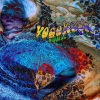 The artwork says it all here, as those unfamiliar with Vocokesh cantell right away what's inside: an obsession with psychedelic guitarrock and a twisting of genres. That it is as strange as it is but stillmakes an impact is truly an accomplishment, in my opinion, because ithas the ability to estrange people at its very core. With no vocals tospeak of, and a decided lack of structure here and there, some wouldlose interest even though the quality of the playing is of the highestcaliber. This is something not foreign to Vocokesh's mad scientistRichard Franecki considering his experiences in F/i, and this fourthalbum from his subsequent project is their most expansive, mostglorious, and finest yet. The album is a bit of a tribute to some ofFranecki's favorite cult films from Michaelangelo Antonioni andAlejandro Jodorowsky, with Vocokesh composing music that could havebeen used as the soundtrack. Even the tracks not ear-marked for thispurpose have a cinematic quality, though, where you can imagine theaction going on while the song is being played. Loud processed guitarsthat wail and screech meet with synthesizers and other electronics plusheavy drumming to produce a wall of sound that could destroy entirecities. The album comes in like a lamb, though, with the title track'sgentle acoustic strumming meeting with some distorted guitar and synthsin an almost flamenco style and a bit of minor key. But then thefifteen-minute crushing blow begins, and "Love Theme From El Topo"struts across the headphones. Loud feedback, dirty solos, kickdrum-heavy rhythms and delay make a delicious smorgasbord, even thoughit never leaves a given area, seeming to meander in the same space. Nomatter: it's still gorgeous, like a composition written by Miles Davisand performed by Hendrix on guitar. It's got that swing, baby, but Iwouldn't turn it up too loud cause the ears'll bleed. That's theblueprint, and though the melodies and chords change, there ain't a lotof variation. I still loved every minute of it, and I'm more than surethat any lover of experimental psych rock will, too.
The artwork says it all here, as those unfamiliar with Vocokesh cantell right away what's inside: an obsession with psychedelic guitarrock and a twisting of genres. That it is as strange as it is but stillmakes an impact is truly an accomplishment, in my opinion, because ithas the ability to estrange people at its very core. With no vocals tospeak of, and a decided lack of structure here and there, some wouldlose interest even though the quality of the playing is of the highestcaliber. This is something not foreign to Vocokesh's mad scientistRichard Franecki considering his experiences in F/i, and this fourthalbum from his subsequent project is their most expansive, mostglorious, and finest yet. The album is a bit of a tribute to some ofFranecki's favorite cult films from Michaelangelo Antonioni andAlejandro Jodorowsky, with Vocokesh composing music that could havebeen used as the soundtrack. Even the tracks not ear-marked for thispurpose have a cinematic quality, though, where you can imagine theaction going on while the song is being played. Loud processed guitarsthat wail and screech meet with synthesizers and other electronics plusheavy drumming to produce a wall of sound that could destroy entirecities. The album comes in like a lamb, though, with the title track'sgentle acoustic strumming meeting with some distorted guitar and synthsin an almost flamenco style and a bit of minor key. But then thefifteen-minute crushing blow begins, and "Love Theme From El Topo"struts across the headphones. Loud feedback, dirty solos, kickdrum-heavy rhythms and delay make a delicious smorgasbord, even thoughit never leaves a given area, seeming to meander in the same space. Nomatter: it's still gorgeous, like a composition written by Miles Davisand performed by Hendrix on guitar. It's got that swing, baby, but Iwouldn't turn it up too loud cause the ears'll bleed. That's theblueprint, and though the melodies and chords change, there ain't a lotof variation. I still loved every minute of it, and I'm more than surethat any lover of experimental psych rock will, too. Read More
- Administrator
- Albums and Singles
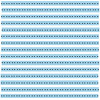 This rapturous disc is the result of a live improvisation conducted under an aqueduct in Zürich, a 40-foot-tall acoustic space that perfectly matches Momentan's simulation of poised ebb and flow. Not standard microsound fair, of minimal movement or painfully obsessive blip-bending, the piece ingests each members' contribution, Korber's threadbare guitar scratch, Müller's increasingly spartan percussive manipulations, and Steinbrüchel's grainy drone cycles, lifting all in an undulant, misty passage across the broad hollow, action that plays perfectly on the disc's punning title.
This rapturous disc is the result of a live improvisation conducted under an aqueduct in Zürich, a 40-foot-tall acoustic space that perfectly matches Momentan's simulation of poised ebb and flow. Not standard microsound fair, of minimal movement or painfully obsessive blip-bending, the piece ingests each members' contribution, Korber's threadbare guitar scratch, Müller's increasingly spartan percussive manipulations, and Steinbrüchel's grainy drone cycles, lifting all in an undulant, misty passage across the broad hollow, action that plays perfectly on the disc's punning title.
The piece seems obsessed with "momentum," full of sweeping static washs and low-level machine hums that arrive quickly and pointedly as if to establish motion, but are consistently buffered by contrastive elements more indicative of detail, or a particular "moment" staking its claim within the sinuous whole. Sections of Müller's inventive hitting and surface-testing frequently occupy both ends at once, coalescing into strands of rhythmic interference that are quick to fold under the weight (or lightness) of each stroke. Often Korber or Steinbrüchel will introduce thunderous or ominous sounds via processed feedback or laptop, as if only to watch the colored noise fade into the pale complexion of its surroundings. The level of communication between players that allows this pause-less dialogue to proceed is astounding. Any back-and-forth that appears in "momentan live" (the 30-min. improv session is accompanied by 3 remixes, one by each contributor) occurs underneath the opaque surface of the piece, and a dominant "voice" never comes to the front. The fluidity and graceful progression will recall Müller's recent solo work and Poire_Z's + record, but the real heroes of Momentan are Steinbrüchel and Korber. The young guitarist is a master of beautifully tempered feedback tones and frail note clusters that run nicely alongside the former's synthetic drones and microscopic click-tracks. Their combination allows for the darkly expressive sheen that coats this work, full of intricate, fleeting gradations. The three remixes are equally successful, if more single-minded pieces. Korber introduces a surprising amount of rhythm, his process more additive and loop-based than the others', crafting a bottom-heavy gem of post-technoid atmospherics. Steinbrüchel's is less engaging, a minimal reconstruction consisting of one deep, droning waveform that sounds directly pulled from Korber's feedback and layered with digital crickets and crackling fire. Müller's mix is the most sympathetic to the original, combining the churning pulses and short loops of Korber's take, with the Steinbrüchel's textural achievements to produce a highly differentiated piece that shares "momentan live"'s preoccupation with issues of drift and stasis. While not a landmark recording, the disc stands as a welcome addition to the catalogs of three artists at the top of their respective games. - 
- Korber/Müller/Steinbrüchelmomentan live (03:00-04:00)
- Korber/Müller/Steinbrüchelmomentan live (10:00-11:00)
- Müllerdef. rmx
Read More
- Administrator
- Albums and Singles
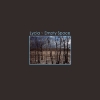 There are several disappointing things about the new Lycia album:mainly the fact that it is also their last album together, as the banddisbanded before finalizing the release. Also, it's a bit short — dueto the band implosion, too, I suppose — even though most songs areright around the five-minute mark. At nine tracks, there just seems tobe something lacking as a defining end statement for this passionateand powerful band that no doubt influenced many, including those atSilber Records, who have been so moved by Lycia that they refer to themas mentors. However, beyond the effects the end of the band had ontheir final recordings, these songs are what many have come to expectfrom this group since their first album in 1989. In fact, Empty Spacemarks a bit of a return to their birth, with original member John Fairrejoining the fold for some drum programming and the whole soundreturning to their post-punk roots. With the old, though, there's alsoa renewed love for pop structure about these songs, like Lycia wasstriving to find a perfect mix of their different albums over theyears. Instrumental tracks make up about half of the record, as well,and though it's entirely possible that they were always meant to bethat way, it still feels like vocals could sit right on top of them.Standard industrial and goth-type effects and sound qualities spill outof the speakers on every track; Mike VanPortfleet has his vocals buriedin the mix for the most part, and Tara Vanflower's otherworldly vocalscharm and disarm as ever. There are some amazing melodies on thisrecord, with an overwhelming feeling of foreboding doom. While it'sunpolished and each song has at least a two second pregap it's stillenough for this to rank up there as one of their finer works, and giventhat the album was supposed to be released four years ago, it's goodthat the songs are making their way out there to true fans now. It's ashame that there'll be no more after this from Lycia, but it's atremendous reminder of how easy it was for them to move their audience.
There are several disappointing things about the new Lycia album:mainly the fact that it is also their last album together, as the banddisbanded before finalizing the release. Also, it's a bit short — dueto the band implosion, too, I suppose — even though most songs areright around the five-minute mark. At nine tracks, there just seems tobe something lacking as a defining end statement for this passionateand powerful band that no doubt influenced many, including those atSilber Records, who have been so moved by Lycia that they refer to themas mentors. However, beyond the effects the end of the band had ontheir final recordings, these songs are what many have come to expectfrom this group since their first album in 1989. In fact, Empty Spacemarks a bit of a return to their birth, with original member John Fairrejoining the fold for some drum programming and the whole soundreturning to their post-punk roots. With the old, though, there's alsoa renewed love for pop structure about these songs, like Lycia wasstriving to find a perfect mix of their different albums over theyears. Instrumental tracks make up about half of the record, as well,and though it's entirely possible that they were always meant to bethat way, it still feels like vocals could sit right on top of them.Standard industrial and goth-type effects and sound qualities spill outof the speakers on every track; Mike VanPortfleet has his vocals buriedin the mix for the most part, and Tara Vanflower's otherworldly vocalscharm and disarm as ever. There are some amazing melodies on thisrecord, with an overwhelming feeling of foreboding doom. While it'sunpolished and each song has at least a two second pregap it's stillenough for this to rank up there as one of their finer works, and giventhat the album was supposed to be released four years ago, it's goodthat the songs are making their way out there to true fans now. It's ashame that there'll be no more after this from Lycia, but it's atremendous reminder of how easy it was for them to move their audience.Read More
- Administrator
- Albums and Singles
 The artists have, thankfully, chosen cover art and title which testifyto these performances occurring at locations on the surface of theEarth, the Southern U.S. no less, instead of in some forgotten fissureof the planet's crust or from the edge of an astral plane, far, far inthe distance as the music would suggest. The 10" contains two sidelongselections from stops along a small duo tour in 2001. Gross, whoalongside Greg Kelley and Bhob Rainey has helped put the Boston improvscene on the map, commissioned Tonne's exploratory vocal talents forthe tour, following a single, fruitful collaboration earlier that year.The reeds-man's impulsiveness does not disappoint, as his increasinglybizarre, limit-crossing assault on sax and clarinet finds a perfectcounterpart in his companion's strained pipes. Much of Gross' playingfocuses on a baffling expansion of the sounds and textures available toa particular instrument. His blowing reaches squealing pitches thatbelong to the ambiance of the motorway or factory space, his lowwarbles and grating trills enough to transform every hair on the bodyinto a lightning rod. Most impressive, though, are his extended boutsof pushing note-less air through the saxophone, creating completelyalien whistles, scrapes, and dry rustles. In short, his is eye-popping,head-rushing, and blood-quickening music that must be heard to bebelieved. Tonne's contribution is equally arresting. The vocalist'sattunement to the nuance and textured rise-and-fall of Gross' playingis remarkable, her voice rising to match the most challenging pitchesor inhuman bits of vibrato. The tendency to mistake one musician forthe other is a risk even after hearing the record several times, aphenomenon that fills the listening experience with frequent moments ofutter disbelief. Tonne builds gliding, theremin-like tones, archingmasterfully into frightening high-pitched shrieks and lowly half-moanswith clear precedent in artists like Diamanda Galas or the venerablePatty Waters. Her most unique talent, however, is the incorporation offoreign syllabic utterances, a kind of glossolalian scat spread acrossGross' varied landscape with enough restraint to keep it wondrouslyeffective. The vocal style brings a subtle degree of future-primitivismto the pieces, recalling the free-calligraphy techniques used by manyAbstract Expressionist painters. My only complaint is that this releasewas not expanded to 12" or full length CD; both pieces fade out withthe wish that at least the room ambiance or a bit of Gross' clappingair-holes might continue long enough to inspire Tonne to swoop backinto song. I can only hope that the duo was pleased enough with theseinitial excursions to take more, soon.
The artists have, thankfully, chosen cover art and title which testifyto these performances occurring at locations on the surface of theEarth, the Southern U.S. no less, instead of in some forgotten fissureof the planet's crust or from the edge of an astral plane, far, far inthe distance as the music would suggest. The 10" contains two sidelongselections from stops along a small duo tour in 2001. Gross, whoalongside Greg Kelley and Bhob Rainey has helped put the Boston improvscene on the map, commissioned Tonne's exploratory vocal talents forthe tour, following a single, fruitful collaboration earlier that year.The reeds-man's impulsiveness does not disappoint, as his increasinglybizarre, limit-crossing assault on sax and clarinet finds a perfectcounterpart in his companion's strained pipes. Much of Gross' playingfocuses on a baffling expansion of the sounds and textures available toa particular instrument. His blowing reaches squealing pitches thatbelong to the ambiance of the motorway or factory space, his lowwarbles and grating trills enough to transform every hair on the bodyinto a lightning rod. Most impressive, though, are his extended boutsof pushing note-less air through the saxophone, creating completelyalien whistles, scrapes, and dry rustles. In short, his is eye-popping,head-rushing, and blood-quickening music that must be heard to bebelieved. Tonne's contribution is equally arresting. The vocalist'sattunement to the nuance and textured rise-and-fall of Gross' playingis remarkable, her voice rising to match the most challenging pitchesor inhuman bits of vibrato. The tendency to mistake one musician forthe other is a risk even after hearing the record several times, aphenomenon that fills the listening experience with frequent moments ofutter disbelief. Tonne builds gliding, theremin-like tones, archingmasterfully into frightening high-pitched shrieks and lowly half-moanswith clear precedent in artists like Diamanda Galas or the venerablePatty Waters. Her most unique talent, however, is the incorporation offoreign syllabic utterances, a kind of glossolalian scat spread acrossGross' varied landscape with enough restraint to keep it wondrouslyeffective. The vocal style brings a subtle degree of future-primitivismto the pieces, recalling the free-calligraphy techniques used by manyAbstract Expressionist painters. My only complaint is that this releasewas not expanded to 12" or full length CD; both pieces fade out withthe wish that at least the room ambiance or a bit of Gross' clappingair-holes might continue long enough to inspire Tonne to swoop backinto song. I can only hope that the duo was pleased enough with theseinitial excursions to take more, soon.Read More
- Administrator
- Albums and Singles
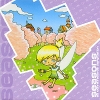 Concept albums in general are a bit troublesome. Like "Music from and inspired by the motion picture," they are sometimes not at all relatable to the subject at hand, and often they get overshadowed by some lofty sense of purpose that ultimately falls flat. When I saw the roster on Seasons, I was willing to ignore the fact that the compilation was a concept album just to hear new work from these bands. So, I must say I was pleasantly surprised to find that the music does, in fact, have a fine correlation with the concept, making this the best theme-based compilation I have ever heard.Ochre
Concept albums in general are a bit troublesome. Like "Music from and inspired by the motion picture," they are sometimes not at all relatable to the subject at hand, and often they get overshadowed by some lofty sense of purpose that ultimately falls flat. When I saw the roster on Seasons, I was willing to ignore the fact that the compilation was a concept album just to hear new work from these bands. So, I must say I was pleasantly surprised to find that the music does, in fact, have a fine correlation with the concept, making this the best theme-based compilation I have ever heard.Ochre
Each artist was asked to compose music that, to them, represented the four seasons. Most took this at its literal meaning, composing four tracks for the four seasons, but a couple, namely Stylus and 90° South, chose a different way, combining different elements to represent more than one season and the change between them. Altogether a fascinating listening experience, the album features emotional reactions of the artists to the states of the year that are sometimes not what you'd expect. In The Land of Nod's tracks, the traditional perception is challenged on "Summer-house": a drone with frog/cat noises that almost sounds like someone being trapped in a warehouse all summer, baking in the heat — not exactly the prettiest image. It's a nice switch of roles, though, with the more traditional interpretations on their other tracks making for lovely chiming guitars and the deafening worry of the winter track, "Light Fades Fast." Longstone's electronic elements are a sharp contrast upon their entrance, and their tracks fade together and contain similar elements, allowing for a nice shift between them to represent the overlap from summer to fall to winter. It's a nice take on the theme, even though some of the sound effects and pitch bends towards the end grate on the nerves. Lakescene, aka The Land of Nod's Ant Walker, keeps the electronics going, with beeps and static washes breaking for crickets and guitar. His tracks were my favorites, making the most of different elements while painting the most lifelike pictures of the seasons. 90° South manufactured one track that shifts with common elements, as well, and with the guitar and keys being joined by thick percussion and swirling noise, it's a fantastic ride, even though the track pushes the fourteen-minute mark. Stylus makes typically odd compositions that expound on odd beginnings, like tribal drums and chanting with bubble noises. His tracks are most "out there," and therefore I was thankful for his inclusion, as he brings a bit of the left field to the proceedings. All in all, though, I was impressed by all contributors, and hope to see more compilations that can truly flesh out a theme with such success. 
samples:
- The Land of Nod - Season of Decay
- Longstone - A Singing Frog Beneath the Ice
- Lakescene - Fall
- 90° South - Seasonal
- Stylus - Icicle Tricycle
Read More
- Administrator
- Albums and Singles
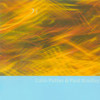 Anxiety and apprehension are made sound incarnate within the firstquarter of this record and holy ground is consecrated and threatenedthereafter. A narrative runs through the thick, pulsing heart of thesesounds; beginning with shimmering, metallic rolls of lightning andhighligthed by the mysterious calls of nocturnal birds, Behind Your Very Eyesannounces itself as a heavy and imposing experience. The opening"Cryptozoology" has the blood of fear running through it; theatmosphere is thick with the tension of unseen voyeurs and rapacioushunters whispering secrets under forested moonlight. Such a heavy andconsuming beginning might seem imposing, but Colin Potter and PaulBradley make the mystery too intriguing to be ignored. It would beimpossible to turn tail and run. "Decline" medicates and softens thebreath of impending disaster with its organ-like tones and unearthlyshakings. There is a bright light at the center of its being and iteminates the presence of safety and familiarity; it's as if the nightof the first sounds has been transformed into the romantic and alluringnight of summer winds and cricket's voices. But the narrative of themusic is not simple and elegant transformation: "Cavity" invokes theaura of a total void, staring down into the abyss, and being frightenedthat nothing looks back. No semblance of human life is found in thecascading mass and it's low-end humming simply shakes my body to anumbness that removes the physical world to a purely mental state. Thebeauty of Potter and Bradley's work is that it removes easy reference;sounds become pure and without linguistic characteristic and there isalways an environment shaped out of silence. By the time "Flattered ToDeceive" expels its suspended ghost, the music has made a full circle.The electronic whines and textural brushes of sound reverberate backinto the mystery of the unknown and demand another journey; thenear-deceptive warmth of these sounds is Behind Your Very Eyes'greatest asset. Though alien and without translatable elements, itexpands and welcomes the mind to a consideration of the esoteric.
Anxiety and apprehension are made sound incarnate within the firstquarter of this record and holy ground is consecrated and threatenedthereafter. A narrative runs through the thick, pulsing heart of thesesounds; beginning with shimmering, metallic rolls of lightning andhighligthed by the mysterious calls of nocturnal birds, Behind Your Very Eyesannounces itself as a heavy and imposing experience. The opening"Cryptozoology" has the blood of fear running through it; theatmosphere is thick with the tension of unseen voyeurs and rapacioushunters whispering secrets under forested moonlight. Such a heavy andconsuming beginning might seem imposing, but Colin Potter and PaulBradley make the mystery too intriguing to be ignored. It would beimpossible to turn tail and run. "Decline" medicates and softens thebreath of impending disaster with its organ-like tones and unearthlyshakings. There is a bright light at the center of its being and iteminates the presence of safety and familiarity; it's as if the nightof the first sounds has been transformed into the romantic and alluringnight of summer winds and cricket's voices. But the narrative of themusic is not simple and elegant transformation: "Cavity" invokes theaura of a total void, staring down into the abyss, and being frightenedthat nothing looks back. No semblance of human life is found in thecascading mass and it's low-end humming simply shakes my body to anumbness that removes the physical world to a purely mental state. Thebeauty of Potter and Bradley's work is that it removes easy reference;sounds become pure and without linguistic characteristic and there isalways an environment shaped out of silence. By the time "Flattered ToDeceive" expels its suspended ghost, the music has made a full circle.The electronic whines and textural brushes of sound reverberate backinto the mystery of the unknown and demand another journey; thenear-deceptive warmth of these sounds is Behind Your Very Eyes'greatest asset. Though alien and without translatable elements, itexpands and welcomes the mind to a consideration of the esoteric. Read More
- Administrator
- Albums and Singles
 This is Rabelais' third release using Argeiphontes Lyre, software ofthe artist's own design which runs instrumental sound through agauntlet of time domain filters, resulting in unique digital music thatretains much of the physicality and tender imbalance of its soundsource whilst enacting subtle, though deeply resonant transformations.His previous record, the excellent Eisoptrophobia, featured processed piano works by Bartók and Satie, and ...benediction, drawcontinues with a similar exploration of the latter's idea of "furnituremusic," this time with Rabelais' own guitar compositions run throughthe forgiving machine. The resulting 71-min. piece, essentially dividedinto eight sections, is most certainly the kind of inconspicuous,sublimated work that Satie's doctrine would promote. The originalguitar lines are completely obscured, disintegrating (ormultiplying...who knows?) into creeping waves of tonal flutter, theshivering patter of half-plucked strings, and faint, drone-likebackdrops that sound like the result of fairly extreme time-lapsemanipulation. The relative sameness and level field of each track make ...benediction, drawhard to penetrate at first, and the meandering movement of the piececould be off-putting for the unprepared. However, deeper listeningreveals the remarkably intricate construction of the work, which,rather than retreating to the background, instead completely transformsthe listening environment. Rabelais understands that Satie's ideas donot predict music that is just another piece of room-filler, but musicwhose structure and passage feel determined by the acoustic quality ofthe sounds themselves, music that becomes, to some degree, a room ofits own. Rabelais' guitar emerges from the Lyre sounding like a25-piece ensemble of brushed guitars, chimes, and hammered bells,passing slowly through a cycle that seems immediately incidental, yetpainfully timed and integrated so that no such group could havepossibly arranged it. Digital manipulation is evident, but the sound ofthe instrument, which Rabelais' claims to have recorded withoutmulti-tracking (!), is beautifully maintained. A look at the notesinside tells me that ...benediction, draw is dedicated to theartist's "father, who [he] never knew, and mother who abandoned [him];"also, the track titles read sequentially, making two florid sentencesthat describe the journey of a "dispossessed child under the invisibletutelage of an angel." Turns out the record is a reminiscence onRabelais' childhood, growing up estranged on the desolate sweep that isSouth Texas, which explains the cover photo of a boy, presumably theartist, in full Gary Cooper regalia. It's easy to imagine ...benediction, drawas furniture music for the wind-damaged Texan plains; each shimmeringwave full of weightless solemnity, highly expressive but also elusivein character. Comparisons to late-period Morton Feldman, particularly For Philip Guston, would not be out of place; a similar tenebrous beauty stretches through ...benediction, draw'sdrift, making any lapse of attention impossible. With this record,Rabelais has created one of the most singular processed guitar worksI've heard in a long time, and it will be a pleasure hear whichinstrument he approaches next.
This is Rabelais' third release using Argeiphontes Lyre, software ofthe artist's own design which runs instrumental sound through agauntlet of time domain filters, resulting in unique digital music thatretains much of the physicality and tender imbalance of its soundsource whilst enacting subtle, though deeply resonant transformations.His previous record, the excellent Eisoptrophobia, featured processed piano works by Bartók and Satie, and ...benediction, drawcontinues with a similar exploration of the latter's idea of "furnituremusic," this time with Rabelais' own guitar compositions run throughthe forgiving machine. The resulting 71-min. piece, essentially dividedinto eight sections, is most certainly the kind of inconspicuous,sublimated work that Satie's doctrine would promote. The originalguitar lines are completely obscured, disintegrating (ormultiplying...who knows?) into creeping waves of tonal flutter, theshivering patter of half-plucked strings, and faint, drone-likebackdrops that sound like the result of fairly extreme time-lapsemanipulation. The relative sameness and level field of each track make ...benediction, drawhard to penetrate at first, and the meandering movement of the piececould be off-putting for the unprepared. However, deeper listeningreveals the remarkably intricate construction of the work, which,rather than retreating to the background, instead completely transformsthe listening environment. Rabelais understands that Satie's ideas donot predict music that is just another piece of room-filler, but musicwhose structure and passage feel determined by the acoustic quality ofthe sounds themselves, music that becomes, to some degree, a room ofits own. Rabelais' guitar emerges from the Lyre sounding like a25-piece ensemble of brushed guitars, chimes, and hammered bells,passing slowly through a cycle that seems immediately incidental, yetpainfully timed and integrated so that no such group could havepossibly arranged it. Digital manipulation is evident, but the sound ofthe instrument, which Rabelais' claims to have recorded withoutmulti-tracking (!), is beautifully maintained. A look at the notesinside tells me that ...benediction, draw is dedicated to theartist's "father, who [he] never knew, and mother who abandoned [him];"also, the track titles read sequentially, making two florid sentencesthat describe the journey of a "dispossessed child under the invisibletutelage of an angel." Turns out the record is a reminiscence onRabelais' childhood, growing up estranged on the desolate sweep that isSouth Texas, which explains the cover photo of a boy, presumably theartist, in full Gary Cooper regalia. It's easy to imagine ...benediction, drawas furniture music for the wind-damaged Texan plains; each shimmeringwave full of weightless solemnity, highly expressive but also elusivein character. Comparisons to late-period Morton Feldman, particularly For Philip Guston, would not be out of place; a similar tenebrous beauty stretches through ...benediction, draw'sdrift, making any lapse of attention impossible. With this record,Rabelais has created one of the most singular processed guitar worksI've heard in a long time, and it will be a pleasure hear whichinstrument he approaches next. - L'Enfant déshérité s'enivre de soleil
- Retrouve l'ambroisie et le nectar vermeil
- Et l'Esprit qui le suit dans son pèlerinage
Read More
- Administrator
- Albums and Singles
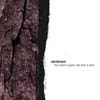 As far as creating atmospherics is concerned, the merging of similarsounds and muddy samples works fine in a simple and amateur way. Thisprinciple cannot be applied to a fifty minute record of unconventionalrecording processes. Nothing leaps out at me in any significant way onthis disc; many of the sounds are intriguing in and of themselves, butthey don't work out when stretched to times well over ten minutes. Ihave a feeling that they wouldn't work out at periods of five or sixminutes. While there are variations in sound and theme on each of thetracks, none of the themes fall into a distinct relationship witheachother and this ends up being unsatisfactory. "Four Chambers PlusTheir Various Fluids" has a great spot near the middle of it thatfeatures the rattling of metal pipes, awkward springs, and bustedpendulums, but it doesn't sync into the rest of the song and emergesfrom the previous section like a young child on stilts. It ultimatelymoves nowhere and returns to silence when covered up by other sounds.On the other hand, "Some Trio Study (#2)" feels as if it belongs in aretirement home; it's a loop of some wonderful melodic samples thatstretch into infinity and change only slightly for the course of fiveminutes. The effect is stunning for the first minute and then themonotony wears thin. The best and the worst is saved for last; "HarborSurfacant" features some stretched and pitch samples of classicinstruments rotating and dying in a mess of pops and claps. It is byfar the most inspiring of the five pieces, but that does not hide thefact that what could've been a journey into the darker realms ofthought ends up sounding more like a damaged toy piano. There's nodynamics at play to keep things interesting for the nine minute runningtime. I just can't sit through it without checking the time to see ifit's over, yet. The sounds are fun here and there, but Vertonen simplycannot come up with an arrangement that stays consistently interesting.
As far as creating atmospherics is concerned, the merging of similarsounds and muddy samples works fine in a simple and amateur way. Thisprinciple cannot be applied to a fifty minute record of unconventionalrecording processes. Nothing leaps out at me in any significant way onthis disc; many of the sounds are intriguing in and of themselves, butthey don't work out when stretched to times well over ten minutes. Ihave a feeling that they wouldn't work out at periods of five or sixminutes. While there are variations in sound and theme on each of thetracks, none of the themes fall into a distinct relationship witheachother and this ends up being unsatisfactory. "Four Chambers PlusTheir Various Fluids" has a great spot near the middle of it thatfeatures the rattling of metal pipes, awkward springs, and bustedpendulums, but it doesn't sync into the rest of the song and emergesfrom the previous section like a young child on stilts. It ultimatelymoves nowhere and returns to silence when covered up by other sounds.On the other hand, "Some Trio Study (#2)" feels as if it belongs in aretirement home; it's a loop of some wonderful melodic samples thatstretch into infinity and change only slightly for the course of fiveminutes. The effect is stunning for the first minute and then themonotony wears thin. The best and the worst is saved for last; "HarborSurfacant" features some stretched and pitch samples of classicinstruments rotating and dying in a mess of pops and claps. It is byfar the most inspiring of the five pieces, but that does not hide thefact that what could've been a journey into the darker realms ofthought ends up sounding more like a damaged toy piano. There's nodynamics at play to keep things interesting for the nine minute runningtime. I just can't sit through it without checking the time to see ifit's over, yet. The sounds are fun here and there, but Vertonen simplycannot come up with an arrangement that stays consistently interesting.Read More

